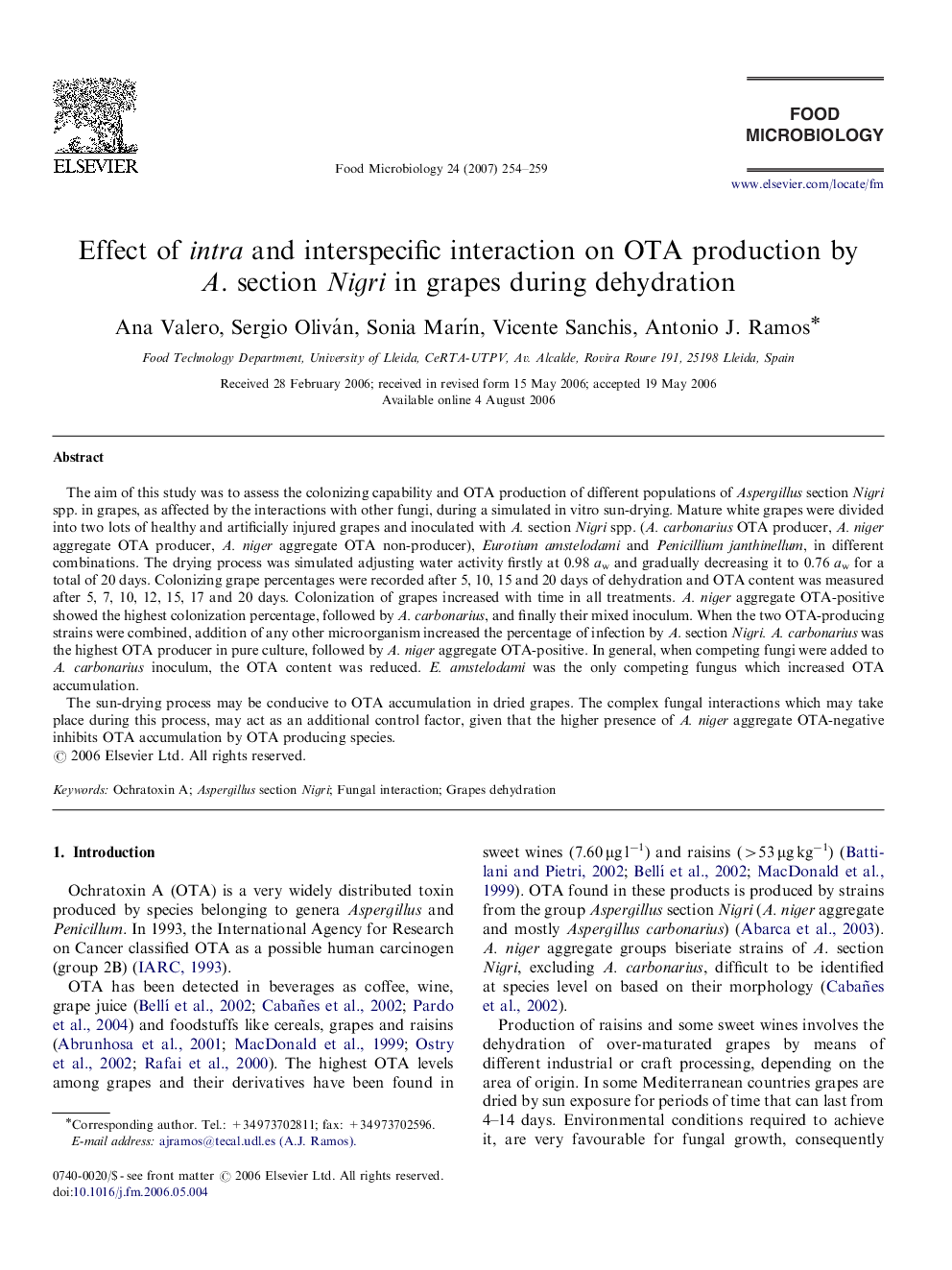| Article ID | Journal | Published Year | Pages | File Type |
|---|---|---|---|---|
| 4363863 | Food Microbiology | 2007 | 6 Pages |
The aim of this study was to assess the colonizing capability and OTA production of different populations of Aspergillus section Nigri spp. in grapes, as affected by the interactions with other fungi, during a simulated in vitro sun-drying. Mature white grapes were divided into two lots of healthy and artificially injured grapes and inoculated with A. section Nigri spp. (A. carbonarius OTA producer, A. niger aggregate OTA producer, A. niger aggregate OTA non-producer), Eurotium amstelodami and Penicillium janthinellum, in different combinations. The drying process was simulated adjusting water activity firstly at 0.98 aw and gradually decreasing it to 0.76 aw for a total of 20 days. Colonizing grape percentages were recorded after 5, 10, 15 and 20 days of dehydration and OTA content was measured after 5, 7, 10, 12, 15, 17 and 20 days. Colonization of grapes increased with time in all treatments. A. niger aggregate OTA-positive showed the highest colonization percentage, followed by A. carbonarius, and finally their mixed inoculum. When the two OTA-producing strains were combined, addition of any other microorganism increased the percentage of infection by A. section Nigri. A. carbonarius was the highest OTA producer in pure culture, followed by A. niger aggregate OTA-positive. In general, when competing fungi were added to A. carbonarius inoculum, the OTA content was reduced. E. amstelodami was the only competing fungus which increased OTA accumulation.The sun-drying process may be conducive to OTA accumulation in dried grapes. The complex fungal interactions which may take place during this process, may act as an additional control factor, given that the higher presence of A. niger aggregate OTA-negative inhibits OTA accumulation by OTA producing species.
